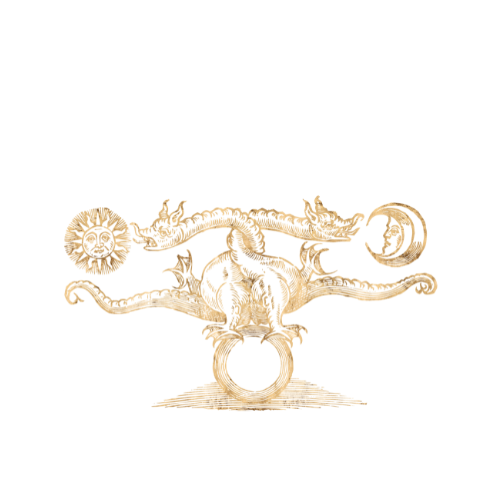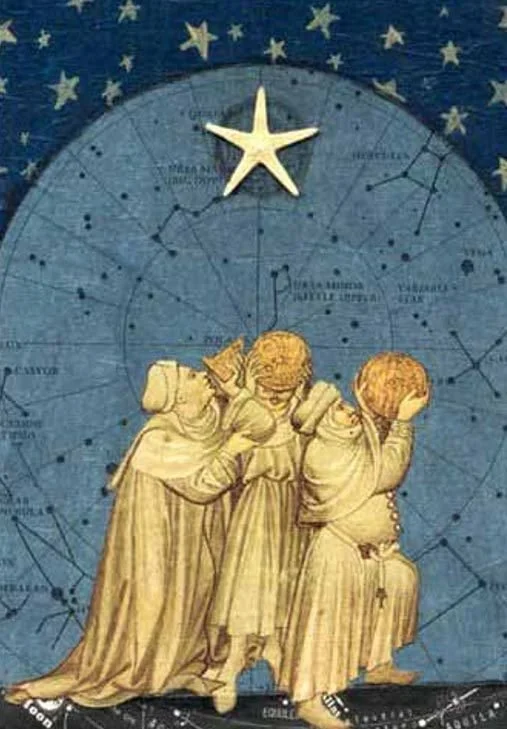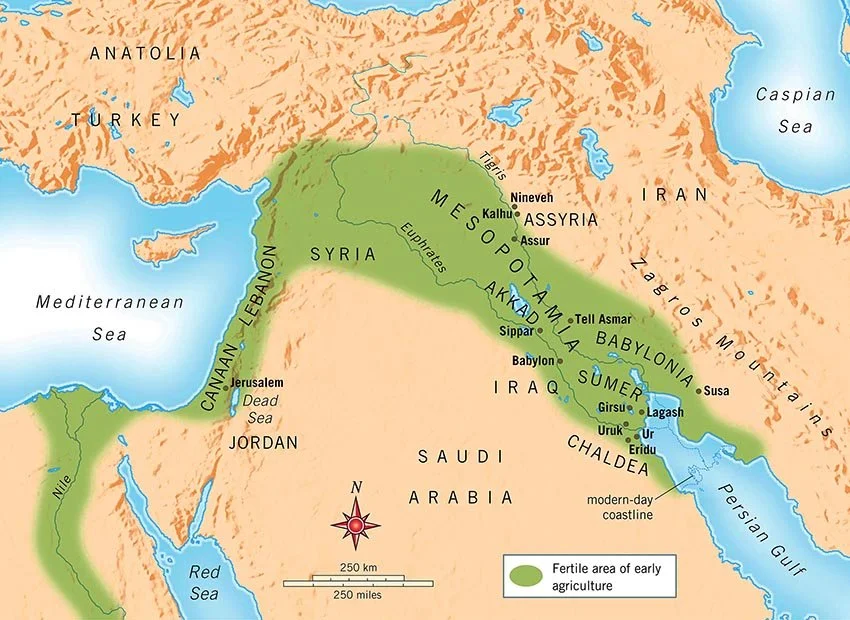A Very Abridged History of Astrology
“Astrological doctrines are received, translated, adapted, practiced, and then, in turn, passed on to others, influencing the philosophical systems, religious beliefs, and political history of each host culture.”
Why the History Matters
WE live in an amazing moment, one in which astrology is very close to the mainstream, where many people know they have an entire birth chart, rather than just a Sun-sign, where astrological research is ongoing, and deepening our field.
I believe in the importance of understanding the historical underpinnings of any tool or practice I encounter, and so what follows here will be my rendering of the trajectory of astrology. With that said, this is an extremely condensed history! Astrology is thousands of years old, and there’s really no way for me to totally take you into every twist and turn of the discipline.
This article intends to map out the historical scope of astrology, noting its major turning points, the parts of the world it volleyed back and forth between, and what each culture infused into it over time. With that said, this is by no means an exhaustive history, and if you’d like to take your research even deeper, I highly recommend Chris Brennan’s Hellenistic Astrology: The Study of Fate and Fortune, Demetra George’s Ancient Astrology Volume 1, and Helena Avelar and Luis Ribiero’s On the Heavenly Spheres.
The reason why I care (beyond just being informed) is that while astrology is embedded in mainstream spirituality conversations, it’s easy to forget just how multicultural the history of astrology is. Just as the ancient world was mutable and ever-changing, the system of astrology, after it emerged in Babylon, traveled all over the world, and absorbed the influences of various cultures in the process of doing so. I love to highlight this fact, so that we can appreciate the syncretic nature of astrology. The historical perspective enriches our understanding of how the chart works, and enables us to read more skillfully.
Transmission and translation are critically important to the art of astrology. each culture that astrology was picked up by had its own cultural customs, its own myths and beliefs, its own philosophies, and to make our astrology as robust as possible, it's best to be familiar with those components. So let's spend some time walking through the ancient world, and the path that astrology took over the ages.
Babylonian Astrology | 2000 - 100 BCE
Scholars believe that people were using the sky to divine on all kinds of things like farming, politics, travel as early as the 3rd millennium BCE. We have evidence that cultures in China, Mesopotamia, and the Indus Valley were all practicing divinatory astrology. The earliest recorded evidence of natal astrology appears in the 5th century BCE, recorded in Babylonian cuneiform texts.
Map of ancient Mesopotamia | Source
Babylon was an ancient city in Mesopotamia, built along the banks of the Euphrates river. It sat just south of what we'd consider Baghdad today.
Babylonian astrology took into account the five planets, plus the Sun and Moon, and fixed stars. Their most important planet was Marduk, who we know as Jupiter. At this time in history, people were using a combination of sky observation and haruspicy (divination via animal organs) to make observations and predictions about the world around them, and this is our earliest recorded form of astrology.
Thanks to the conquests of Alexander the Great, Greeks came into contact with Babylonian astrology in the 4th century BCE, and by 209 BCE a Babylonian priest traveled to the Greek island of Kos and opened an astrology school there.
Hellenistic Astrology | 150 BCE - 625 CE
By 150 BCE, astrology began to spread eastward from Babylonia into the Indus Valley and into the west. It eventually found its way to Egypt, where the cosmopolitan capital city of Alexandria facilitated the intermingling of many different cultures, religions and philosophies.
The Egyptians were already using the thirty-six star decan for calendar / ritual purposes. The decans are a way of dividing the degrees of the zodiac up into thirty-six discrete pieces of the sky. Decans were thus absorbed into pre-established Babylonian techniques of divination from the stars.
The founders of Hellenistic astrology brought in the components of Greek philosophy and mathematical astronomy, and in this environment, the astrology that we recognize today was born. A chart that had an ascendant, planets in signs and houses, aspects, lots, and timing methods came into practice at around 150 BCE.
With the ever spreading conquest of the Roman empire in the 1st century BCE, Hellenistic astrology spread all over the Roman empire, and over the next seven hundred years, a proliferation of astrology texts would be written in Greek and Latin, by authors of many different cultural backgrounds throughout the Mediterranean and the ancient near east: we’re talking Egypt, Turkey, Greece, Syria, Rome, and North Africa.
Some names of famous Hellenistic astrologers are Vettius Valens of Antioch, Claudio Ptolemy of Egypt, Porphyry of Tyre, Firmicus Maternus of Rome - these are but a few, but you may have heard of these people, as these are some of the authors that are being translated today, bringing us that insight from the Hellenistic world into our astrological practices in the 21st century.
All of this growth was no doubt very important for fertilizing new ideas into the language of astrology, but with the coming of the Christian era, and the backlash against pagan practices, Hellenistic astrology was eventually forgotten in western Europe, and so we see astrology diminished in Europe, but next transmitted to more eastern locales, where they were further infused with new philosophies and perspectives.
Persian & Arabic Astrology - 226 CE - 1300 CE
As astrology receded to the background in Europe, Persian rulers sought to use astrology for purposes of conquest and war, and to justify legitimacy of their rulers. Hellenistic astrology texts were translated from Greek to the Persian Pahlavi language, and one of the major innovations of this era (226 CE - 632 CE) was the discovery of the Jupiter/Saturn cycle.
The Arabs conquered the Persians in 632, and in scholarly spaces, Islamic scholars translated Persian and Indian astrological texts into Arabic. Arabic astrologers added new Arabic parts to the Greek lots, and the twenty-eight lunar mansions (derived from Indian system of nakshatras).
Astrology flourished between the 7th and 10th centuries in the Arabic world. By the tenth century, Arabic astrological texts began flowing back into the Eastern Roman Empire at Byzantium, and these works were translated back into Greek.
Astrological texts found their way to Moorish libraries and bookshops in Southern Spain, and by 1085 European scholars were very interested in learning about the classical world, through texts that had been preserved by the Arabs and their intellectual tradition.
Medieval & Renaissance Astrology | 1200 - 1700 CE
By the Medieval period, interest in astrology in Europe was fully thriving again, and in this moment we have yet another instance of the role of translation. Astrology texts at this time were derived from Arabic astrology texts, translated into Latin by Medieval scholars. Fhese texts were formulated from Persian and Indian translations of Hellenistic texts written a thousand years prior.
Astrology became seen as a legitimate science, and became a cornerstone of a university education.
In 1453, Constantinople is conquered by the Turks, and Greek scholars traveled more frequently to Italy, bringing about a rebirth of classical paganism and humanism, which we now recognize in history as the European Renaissance. This era ushered in the flourishing of of astrological magic, as new translations of the Arabic text Picatrix and Marsilio Ficino's book Corpus Hermeticum became more widely available. Here we see a sort of flowering of the magical side of astrology, which then became competitive with astrology that scholars saw as more science-based, like medical astrology.
By the end of the Renaissance period, Copernicus's heliocentric model of the universe is accepted, casting astrology into doubt.
17th Century England
Despite the fact that the Copernican Revolution kicked astrology out of the university space, astrology still flourished in 17th century England. Its chief popularizer was a man named William Lilly. He wrote the very important astrological text, Christian Astrology, which focuses heavily on horary techniques.
By the 18th century, the Enlightenment philosophy ensured that astrology was really no longer deemed a worthy topic of research or practice, and it, along with herbalism, folk magic practices, and other ways of being in touch with the natural world, was relegated to the background, deemed pagan or irrational, and almost disappeared altogether.
Modern Astrologies
Moving into more contemporary times, the Spiritualist movement in the U.S. in the 1840s-1920s, as well as the Theosophist movement around 1875 were able to revive astrology as a tool for seeing into the beyond, into the soul or the psyche.
But so much was lost of the clearly rich and deep history of astrology, as so many texts fell into obscurity, that by the 1990s there were only four texts that could touch on direct knowledge of ancient, Hellenistic astrological texts. The astrology community in the 90s founded Project Hindsight, which is responsible for translating ancient texts, and this is how now, today, we have such a wealth of information. so we're definitely in our own flourishing moment in astrology history.
Perhaps not as romantic an image of scholars huddled around astrolabes and parchment paper in the Library of Alexandria we are uniquely lucky to be able to access the kind of information, and begs the question, what are the influences of our current moment that will no doubt find their way into astrology practice? What kind of touch, or effect, will we have on astrologers of the future?



